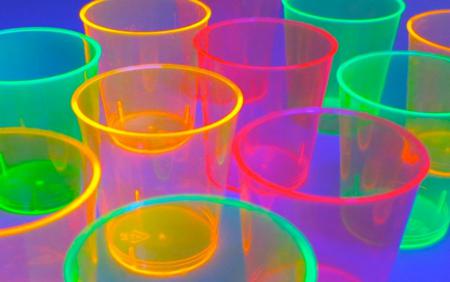Walking in beauty
In May, the Pew Research Center reported that young U.S. adults are not identifying with any one religion. Pew surveyed 35,000 people and found that the percentage of Americans who identify as "Christians" had declined by 8 percent since 2007. Overall, the report said those who define as "religiously unaffiliated" rose from 16 percent in 2007 to 23 percent in 2014. Also, between 2007 and 2014, the number saying they are atheist or agnostic grew from 25 percent to 31 percent.
The numbers are most startling among young adults, often called millennials (ages 21-35). Overall, 35 percent are religiously unaffiliated, a higher rate than any religious affiliation in that age group: 16 percent identify as evangelical Protestants;16 percent as Catholics; and 11 percent as mainline Protestants.
How might this lack of religious affiliation be affecting our young adults?
Another Pew study (March 2014) found that millennials, as a group, are less trusting than previous generations: only 19 percent say most people can be trusted, compared with 41 percent of baby boomers (ages 51-69). This coincides with what Pope Francis noted in his encyclical on creation: "There is also the fact that people no longer seem to believe in a happy future;they no longer have blind trust in a better tomorrow based on the present state of the world and our technical abilities."
The Centers for Disease Control and Prevention report millennials are most likely of any age group to binge drink, averaging eight drinks on a binge.
Less religion, heavier drinking, less trust. How these translate into happiness or feeling part of a community has not been surveyed. However, I was struck by a parallel in a book by the first Navajo woman surgeon, Dr. Lori Arviso Alvord ("The Scalpel and the Silver Bear," 1999). Alvord completed medical training at Stanford and returned to the Navajo reservation to practice. She soon noticed high levels of alcoholism -- not only in older Navajos, but younger ones also. In fact, young Navajo adults were not only dying in more alcohol-related crashes than older adults, they were also joining gangs.
"The elders say that it is a result of the fact that parents have not taught their children the traditional ways," Alvord wrote. "Without the teachings of 'walking in beauty,' these children tempted to create their own tribe (gangs), but with devastating effects. The blueprint for tribal life ways had not been handed down to them."
She explained the Navajo tradition of "walking in beauty" as living at peace and harmony with all creation: "the animal world and the natural worlds -- the earth, plants, water, air, everything that surrounds us."
This echoes Pope Francis' words about creation's beauty: "The Lord was able to invite others to be attentive to the beauty that there is in the world because he himself was in constant touch with nature, lending it an attention full of fondness and wonder. As he made his way throughout the land, he often stopped to contemplate the beauty sown by his Father, and invited his disciples to perceive a divine message in things."
Have we, as Alvord feared, "failed our children and young adults? Have we failed to teach them how to "walk in beauty," a beauty which links us to one another through Christ in God's plan for salvation?
No doubt, parents do try to pass on religious beliefs and traditions of our faith. But we may not have done it as well as we might hope. And our children -- our young adults -- are less rich.
How do we change that? Perhaps Pope Francis will help. Certainly, what is increasingly called "the Francis effect" is exposing young people to our Catholic faith in new and exciting ways. No doubt, as the pope's encyclical on creation reaches our young people, they will learn more about walking in beauty with each other and all creation. Perhaps, in Pope Francis' words, they will learn that they are part of a great whole, part of a creation God has called them to be one with and which Christ has called us to nurture.
Patricia Kasten is associate editor of The Compass, diocesan newspaper of Green Bay, Wisconsin.



















